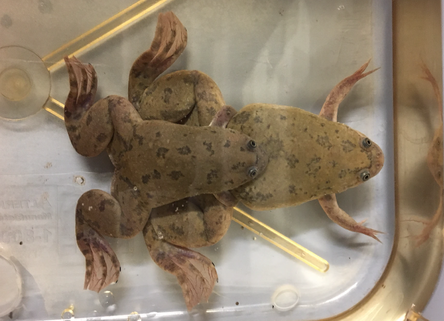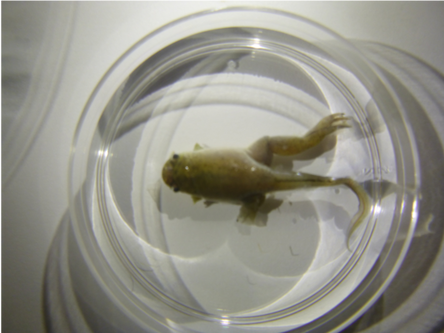Unique wintering strategy in Sorex araneusI am currently researching Dehnel’s phenomenon, a unique wintering adaptation that involves the shrinking of the brain and other organs in the fall, with regrowth in the spring, that readily occurs in the European common shrew, Sorex araneus. However, the underlying genetic mechanisms of this phenomenon, including how gene evolution and changes in gene expression contribute to this trait, remain unknown. I am using evolutionary models, to conduct whole genome scans of molecular adaptation (positive selection) in protein coding genes and making comparisons of gene expression in brain regions between the common shrew and other mammals. Preliminary results show that phospholipid metabolism and PPAR pathways may be associated with Dehnel’s phenomenon, while other influential genes found in this experiment have also been found to be involved in Alzheimer’s and Parkinson’s disease, which may provide further insight into these neurodegenerative diseases.
|
Sex determination in Xenopus with Dr. Ben EvansThe sex chromosome has evolved multiple times within the species of Xenopus. Currently, Dr. Evans has identified three nonhomologous sex determining systems within Xenopus laevis, Xenopus tropicalis and Xenopus borealis. The variation and recency of these systems allows for an amazing opportunity for comparing these genomes to better understand their sexual evolutionary pathways. Specifically, Dr. Evans and I seek to better understand the process of sex determination through genetic knockouts and transgenic lines of two genes, DM-W and DMRT1, to observe when and how these genes are expressed through the Xenopus phylogeny.
|
Disease modeling in Xenopus with Dr. Marko HorbXenopus has been used as a model organism for many years in developmental biology, mainly due to external fertilizations that produce thousands of robust embryos. My research aimed to expand the research capacity of this model species by using a novel genome editing technology, the CRISPR-Cas system, to create mutant lines in Xenopus tropicalis and Xenopus laevis. Then, in collaboration with other scientists, we analyzed the phenotypes of these mutations to better understand developmental pathways to better understand human disease. I created over 20 lines during my time at Marine Biological Laboratory. Specific genes of interest were 1) prph2 and its function in the formation of the outer rod segments in the developing eye 2) olig2 and its role in muscular degeneration 3) the rxr gene family and their ability effects on metamorphisis 4) tbx5 and its conserved role in cardiopulmonary evolution.
|



